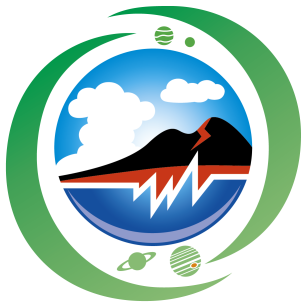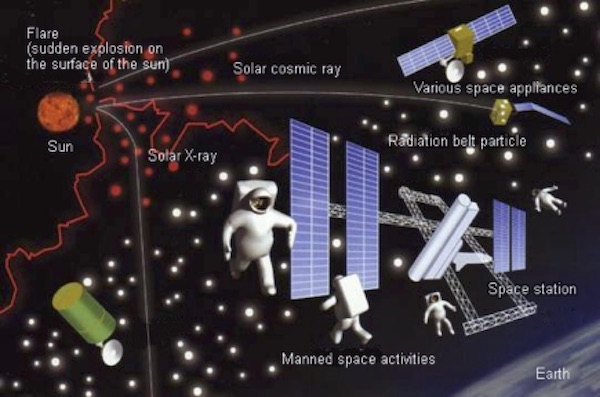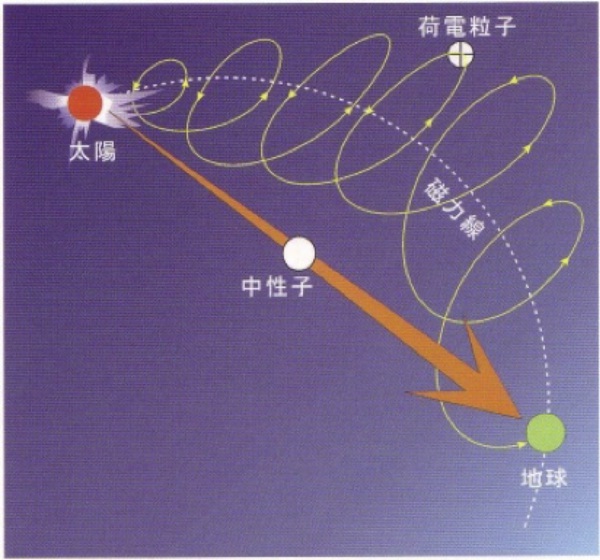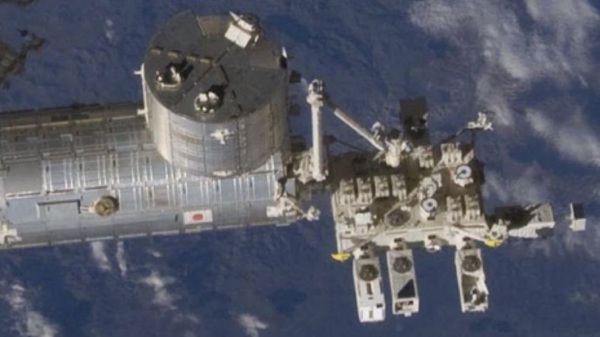Topics 2020.04.24
New observation of Solar Neutron
Figure 1: Schematic illustration of space radiation environment.
As shown in Figure 1, there exit several kinds of space radiation in the vicinity of the earth; i.e. galactic cosmic rays, solar energetic particles, and earth's radiation belt particles. Effect of the solar energetic particles is most hazardous for the space activities. Solar energetic particles are thought be produced by I) reconnection of the magnetic field lines over the sunspot region, and II) acceleration by the shock front of the CME (coronal mass ejection). Charged particles such as protons and electrons are very much affected by the shape of the interplanetary magnetic field lines. Actually, the magnetic field line basically shows a spiral structure in the interplanetary space (see Figure 2). Since the field line structure itself is not always known, we do not collect adequate information on the timing of production of the solar energetic particle. On the other hand, neutron will give us a good information for the timing of acceleration.
We have installed a new detector called SEDA to measure high-energy particles including neutrons on the international space station (ISS) in 2009, when I was a director of space environment research group in JAXA (see the right end part in Figure 3). By analyzing neutron data, it was found that high energy neutron was produced by the reconnection above the solar surface. Produced high-energy protons attacked the solar surface, resulting in the production of the high-energy neutrons (Muraki et al., 2016, Koga et al., 2017).
More information have been obtained by SEDA observations, such as a westward movement of the south Atlantic anomaly, and the penetration of outer belt electrons into the inner radiation belt over slot region (Obara and Matsumoto, 2016).
As mentioned above, I used to be in JAXA from 1986 to 2011. In the meantime; i.e. from 1997 to 2007, I was transferred to NiCT, where I was in charge of Space Weather Forecast. Both experiences helped me to publish space weather guideline in United Nation as a chair of the committee (UNREPORT, 2013). By using the real-time data of high-energy particle from SEDA and other JAXA satellites together with the information from space weather forecast, safety of the space activities has been maintained.
Prof. Takahiro Obara, Planetary Plasma and Atmospheric Research Center
Figure 2:Trajectories of solar protons (straight one) and charged particles (helical one).
Figure 3:Space environment data acquisition instrument (SEDA) on board the international space station (ISS).cJAXA
References
Koga et al., Solar Phys, 292:115, doi 10.1007/s11207-017-1135-y, (2017)
Muraki et al., Solar Phys, 291:1241, doi 10.1007/s11207-016-0887-0, (2016)
Obara et al., Electronics and Communications in Japan, 95(9), 10, doi 10.1002/ecj.11418, (2012a)
Obara et al., Acta Astronautica, 71, 1, doi 10.1016/j.actaastro.2011.08.009, (2012b)
Obara et al., UN COPUOS Report, A/AC.105/C.1/2013/CRP.13, pp.50, (2013)
Obara and Matsumoto, Sun and Geosphere, 11(1), 61, ISSN 2367-8852, (2016)



